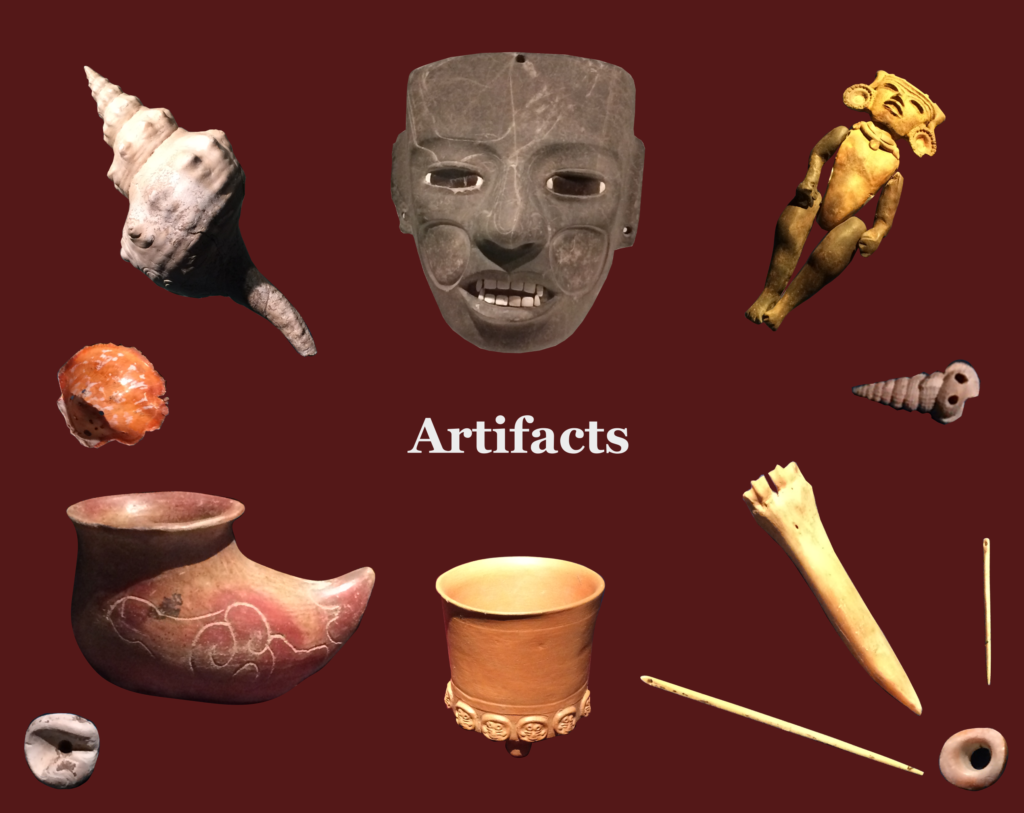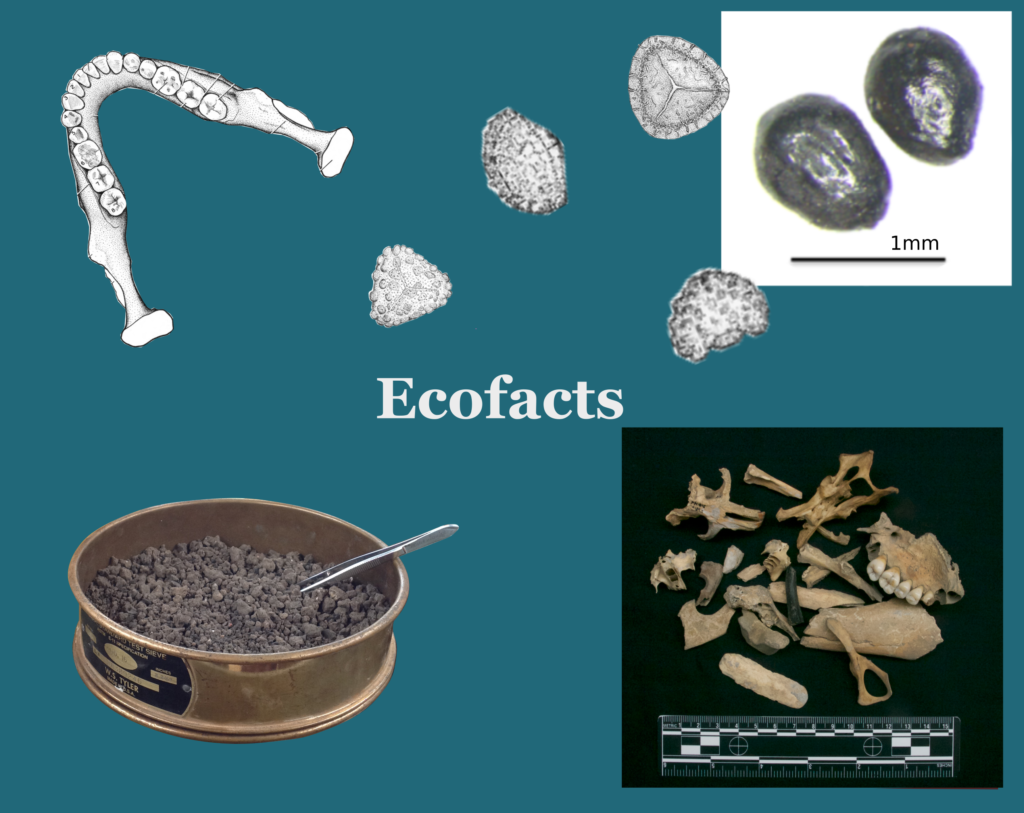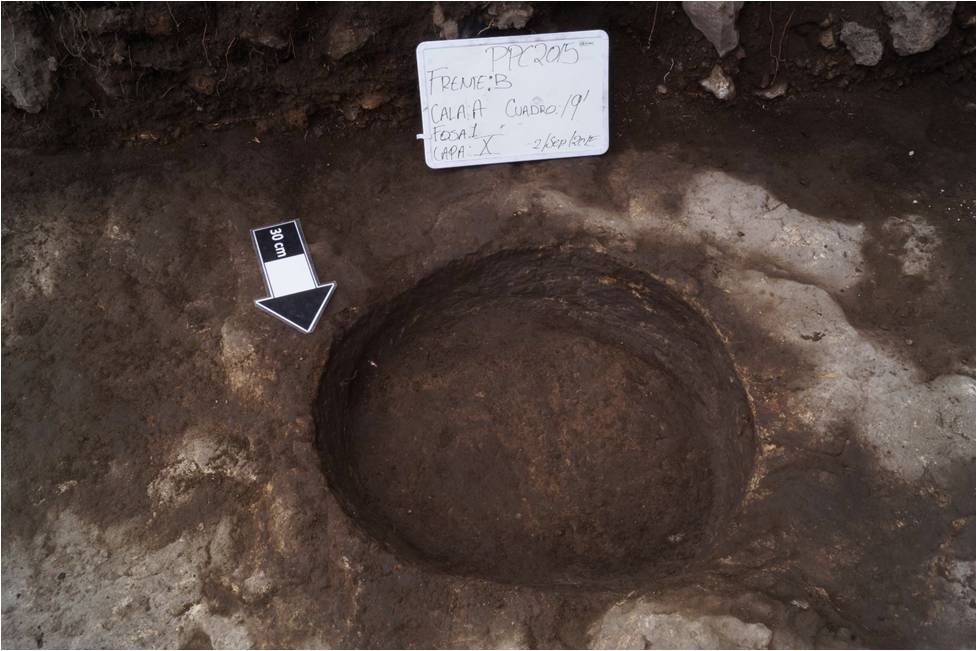Archaeological Materials
Many material types are recovered during excavations, and each is classified according to its attributes. All archaeological materials can be grouped into four main categories: (1) artifacts, (2) ecofacts, (3) structures, and (4) features associated with human activity.
Artifacts and ecofacts are portable and thus can be removed from the site to be analyzed by specialists. Architectural structures and features are usually recorded only through photos and drawings, and where possible, through topographic survey. Usually structures and features cannot be removed from their original context, so we rely on sampling, for example, of sediments inside postholes to analyze these contexts further.
Artifacts
As mentioned earlier, artifacts are portable material remains, and these objects are made or modified by a person in a specific time and place. Examples of artifacts include ceramics (e.g., figurines, plates, vases, and jars), stone tools, and carved bone or shell. Artifacts are essential to understanding the daily life of pre-Hispanic societies since each type of material can provide us with diverse information concerning how the population extracted, manufactured, used, and discarded each of these artifacts.

Artifacts can provide us with diverse lines of evidence about how the ancient population incorporated different material types in their daily lives, as well as the techniques used in their manufacture. Tracing the movement of raw resources and finished products, archaeologist can also reconstruct trade networks with other cities. To read more, visit the Analyses section.
Ecofacts
Ecofacts are naturally organic or inorganic remains found in an archaeological site, suggesting they were deposited as a result of human activity. Seeds, charcoal, minerals, and unmodified shell or bone are just some examples of ecofacts.

Ecofacts can reconstruct wildlife (fauna and flora) from various regions at different points in time, thus helping us to understand past environmental conditions. For example, seeds can be identified to a species level, allowing us to determine what flora inhabited the area in the past. To read more, please visit the section on Analyses.
Structures and features

In archaeology, we use the term “structures” to refer to non-portable architectural elements, usually made of durable materials as soil, stone, or wood. The forms in which such structures are found range from land-leveling bedrock levels to walls, floors, houses, or even monumental buildings such as the Sun Pyramid.
The picture to the right shows a floor and sloping talud wall of one of the areas excavated in the 2015 season.
Other non-portable manifestations of past human activity that do not properly constitute a structure are called features. These include imprints of posts in the ground, deliberate alignments of stone, burners, and structures carved in the bedrock (pits, cists, etc.).
In the next picture, we can see a pit that was carved directly into the bedrock.

Literature consulted
Renfrew, C., and P. Bahn. 2007. Archaeology Essentials: Theories, Methods, and Practice. London: Thames & Hudson, pp. 304.